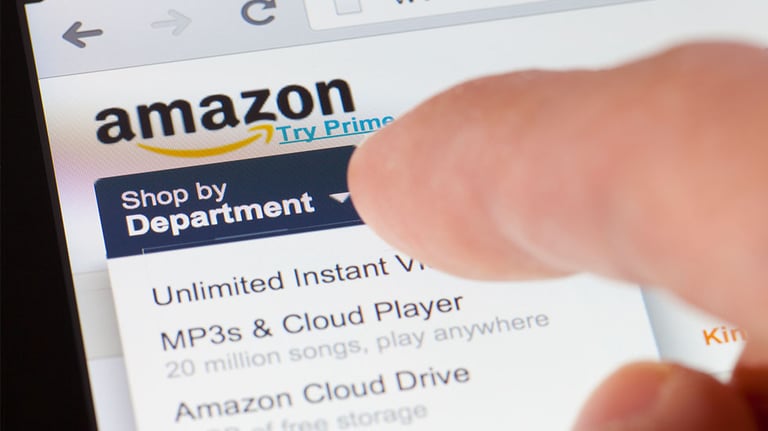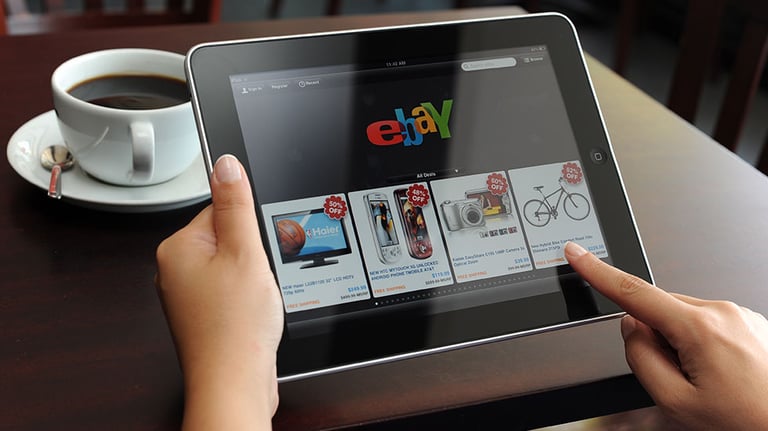
With more and more consumers shopping online, there has been an increase in counterfeit items being sold to unsuspecting buyers. It can be difficult to tell the difference between what’s real and what’s fake, especially when you have to base your decisions on photos, descriptions, and what you hope are authentic reviews.
Below are five steps you can take to avoid buying counterfeit products on sites like Facebook Marketplace, eBay, and Amazon.

Take a closer look at the seller
It’s common for third-party sellers to use well-known ecommerce sites to get rid of excess inventory, reach a larger audience, and make more sales. While a lot of the sellers on these sites are reputable, there are also many scammers among them. For this reason, it’s critical to take a closer look at any third-party seller you’re considering.
Here are some tips for investigating sellers:
- Locate the seller by visiting the product page on the website.
- Browse the seller's profile. Be leery if a seller's profile has a "just launched" badge. Scammers often run multiple accounts for short periods.
- Stay clear of sellers with unusual names, as scammers frequently use random characters or alternative spellings as a way to slip through counterfeit defenses.
If you discover any questionable information, avoid purchasing from the seller. Another good strategy is to buy products sold directly from a company's website, if possible. For instance, when shopping on Amazon, this would mean buying products described as being “sold and shipped by Amazon.com,” as opposed to resellers or third parties.

Identify fake reviews
You can also spot a fake product by looking at the reviews. Be aware of an abundance of 5-star ratings, as these are often a red flag that the comments aren't authentic. Additionally, remember that the "Verified Purchase" tag on Amazon product reviews doesn't necessarily mean the comments belong to a real person.
Unfortunately, there are many sellers who pay businesses or people to create fake accounts and leave glowing reviews that are not real. Luckily, online tools like Fakespot can help determine if a review is legitimate.
You can also spot red flags without using an online service. For instance, if you see multiple positive reviews provided within a few days, this can be a sign that people were paid to post these reviews. Other warning signs that a review isn't authentic are:
- Poor spelling and grammar
- Similarly staged photos in multiple reviews
- Similar wording in multiple reviews
- Over-the-top remarks that seemed auto-generated
Confirm shipping logistics
Extra-long shipping times are another red flag that a seller may be a scammer. For example, a new vendor on Amazon must maintain their account for at least two weeks. Because of this, sellers with fake products will schedule a shipping timeframe that extends beyond Amazon's standard shipping timeframe. The result is very little recourse for the buyer if there is a problem, as the company may no longer exist.
Compare unusually low prices to other websites
If you spot a seller promising a high-end item for an unusually low price, it’s probably not the great deal it appears to be, as it's likely a counterfeit. For comparison, check the product's price on other websites. If the price still seems “too good to be true,” it probably is.

Seller wants you to pay using a different platform
Only purchase from a seller who accepts payment from trusted payment methods such as PayPal or Facebook Checkout. Since these methods are secured by purchase protection, you'll get a refund if you don't receive the item you purchased.
Don't buy from a seller who insists on receiving payment through Venmo, CashApp, or crypto, even if the seller offers a discount. This is a strong warning sign that the seller is not legitimate. It could also put your financial data and/or personal information at risk.
Another red flag is a seller that wants to communicate via a messaging app outside of the website's platform. For protection, buyers should only communicate with sellers within a website's platform via built-in messaging tools. For example, Facebook Marketplace, Amazon, and eBay all offer tools for contacting or messaging the seller.
Trust your intuition and other reliable sources
Overall, trust your intuition, especially if something feels amiss. Check with friends and family to see if they have found trustworthy sellers on the websites you're using. Being mindful and careful while you shop online can help you avoid being scammed.

